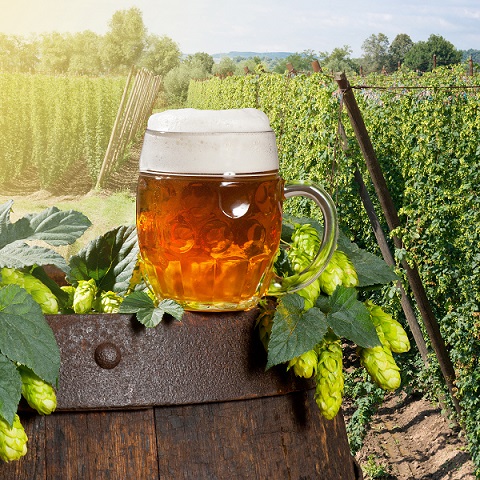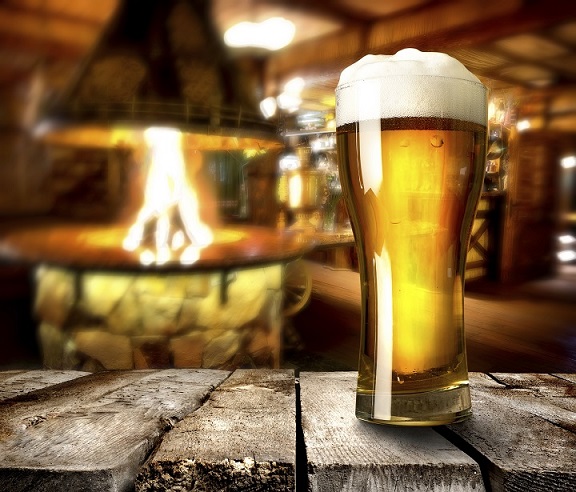
Brewer’s yeast is a moderately popular natural acne supplement derived from the one-celled fungus called Saccharomyces cerevisiae.
Brewer’s yeast resembles dried flakes of cheese, has a bitter taste, and is used to flavour meat and eggs by its fans. Brewer’s yeast was originally sold as a flavoursome by-product of the alcoholic fermentation process by breweries, and stripped of its bitterness with no consideration for nutrition, but nutrition is now why people love it.
It’s different to nutritional yeast, which is eaten for its microbial effects in the gut. Brewer’s yeast and nutritional yeast are the same fungi species, but brewer’s is dead while nutritional is alive. The yeast used to rise bread is baker’s yeast, a different strain of Saccharomyces cerevisiae.
Brewer’s yeast hasn’t enjoyed a surge in popularity, but has remained constant ever since the beer industry kicked off. In fact, brewer’s yeast is one of the older acne remedies. Baker’s yeast was being seriously discussed by scientists back in October 1917, a month short of 100 years ago.
But ancient and holistic guarantees nothing, even if it reveals promise; just look at lead-based makeup from the English middle ages. So is there any evidence for this home acne remedy?
Nutrition, and how chromium affects acne
The immediate answer is yes, there is evidence that brewer’s yeast clears acne, but there’s also numerous flaws. According to legend, brewer’s yeast is extremely rich in acne-clearing nutrition, so here’s the nutrition of one brand per 15 gram tablespoon:
- Thiamin (vitamin B1) – 40% of the RDA.
- Riboflavin (vitamin B2) – 45%
- Folate (vitamin B9) – 7%.
- Pantothenic acid (vitamin B5) – 3%.
- Niacin (vitamin B3) – 25%
- Vitamin B6 – 20%.
- Selenium – 45%.
It mostly features B-vitamins, but brewer’s yeast is traditionally very rich in chromium. There’s been one direct study analysing brewer’s yeast and acne, a small total of studies which is nevertheless superior to supplements like ginseng or gelatin which have none. Scientists fed brewer’s yeast to human volunteers, yeast which had chromium concentrations of 400mcg. The result was a significant decrease in acne.
This study clearly suggests that chromium is the main factor, and that is indeed the common theory. What are the powers of chromium for acne? Supposedly, it improves insulin sensitivity and reduces oily skin.
For insulin, chromium is the main component of a signalling molecule called low-molecular weight chromium binding substance (LMWCr). LMWCr is also composed of amino acids like aspartate and cysteine and is believed to be vital for blood sugar levels, insulin levels and insulin sensitivity.
LMWCr binds to cells surrounding energy stores. When insulin molecules arrive with glucose transported from the bloodstream, and signal the cell to allow storage, LMWCr enhances the signal. It therefore increases glucose absorption, reducing the requirement for insulin and thus oily skin.
Read Annihilate Your Acne – get the diet that could transform your skin!
That’s the current knowledge anyway; LMWCr remains fairly mysterious. It’s known that LMWCr molecules flow from the bloodstream to cells in close correlation with increased insulin activity, but the exact strength of the connection is unconfirmed.
A clearer benefit is that chromium can reduce carb cravings and potentially reduce your intake. Also, one promising study gave 400mcg of chromium to patients who ate a carbohydrate-rich meal of white bread, and observed a 23% reduction in fasting blood glucose immediately afterwards.
Chromium clearly has some connection to insulin and blood sugar, even if it’s far murkier than magnesium. The side effects would be very fun: more effective insulin molecules at storing glucose energy, and less requirement for insulin in the bloodstream. The “side effects” for acne would be less oily skin, since insulin is the strongest hormone behind it.
But does brewer’s yeast reduce insulin?
That said, it’s a very weak and unproven connection. This LMWCr could be just a minor player in insulin. More importantly, is brewer’s yeast itself proven to improve insulin sensitivity?
Study one – 84 patients with type 2 diabetes were fed either a placebo or 6 daily pills containing 300mg of concentrated brewer’s yeast, totalling 1800mg. After 12 weeks, insulin sensitivity rose and fasting blood sugar fell in the brewer’s yeast group.
Most interesting, however, was that the brewer’s yeast chromium was advantageous for insulin sensitivity compared to the same weight of isolated chromium. Brewer’s yeast supposedly contained a complex called “glucose tolerance factor”, organic chromium in combination with amino acids, which was much more biologically active. The absorption of brewer’s yeast chromium was deemed to be longer and more consistent.
Study two – however, these glorious details were demolished by this study, which fed concentrated brewer’s yeast to 43 type 2 diabetics for 4 months. There was no reduction in fasting blood sugar. This brewer’s yeast contained the special glucose tolerance factor, and high amounts of chromium.
Study three – brewer’s yeast’s was resurrected slightly with this study, which fed 75 diabetic patients either brewer’s yeast or a placebo. Brewer’s yeast considerably decreased both fasting blood glucose and post-meal glucose. There was a downside though – the yeast was chromium-enriched rather than normal brewer’s yeast.
Next – the 6 best vitamins and minerals for naturally clear skin
Study four – and this study plunged brewer’s yeast into uncertainty forever. Scientists fed 30 adults 9 grams of chromium-enhanced brewer’s yeast daily. Cholesterol declined, but insulin sensitivity did not.
This study is almost identical in its methods, but the one difference was that the patients were healthy rather than diabetic. Therefore, it’s possible that brewer’s yeast and chromium only reduce insulin in seriously ill people rather than everyday acne patients.
The first study is promising for insulin, but overall, the evidence for brewer’s yeast is weak at best.
The downsides continue
The only decent evidence for brewer’s yeast is the one study directly on acne. Even that study used a chromium-enriched species of brewer’s yeast, and nowadays, not all brewer’s yeasts are rich in chromium. “Brewer’s yeast” is now grown in many mediums other than breweries, and the chromium originally came from barley fermentation.
A thicker and sharper nail in the coffin is the sample sizes: the bigger they became in studies, the less chromium reduced insulin.
The problems don’t stop with ineffectiveness: many experimental acne patients notice breakouts. Brewer’s yeast is a dead microorganism, so it won’t disrupt your gut flora like yeasts such as candida. However, brewer’s yeast is still a moderately common allergen. It’s therefore capable of increasing inflammation levels in the body and skin.
Most importantly, chromium deficiency is hardly a problem anyway. It’s reportedly so rare that it’s non existent. Overdoses of chromium can actually damage your skin by inhibiting superoxide dismutase activity. If deficiency does exist, it’s nowhere close to magnesium and zinc levels.
Even if you are deficient, brewer’s yeast is irrelevant, because multivitamins contain chromium. The organic multivitamin I take (Garden Of Life) contains 130% of the RDA for chromium, in a natural form derived from various vegetables. Brewer’s yeast also tastes bitter and unpleasant and is inconvenient to take.
One factor we haven’t discussed is selenium, which brewer’s yeast is also rich in. Unlike chromium, selenium is confirmed to be excellent for acne, and deficiency is confirmed in places like the central states of the USA. A tablespoon of brewer’s yeast each day would boost your intake nicely.
Circumstances
 Make no mistake that brewer’s yeast might cure your acne. If you do have a rare chromium deficiency, brewer’s yeast could work well, but if you’re afflicted with the more widespread selenium deficiency, it could be particularly excellent given selenium’s role in making glutathione. It could even clear 50% of your acne or more.
Make no mistake that brewer’s yeast might cure your acne. If you do have a rare chromium deficiency, brewer’s yeast could work well, but if you’re afflicted with the more widespread selenium deficiency, it could be particularly excellent given selenium’s role in making glutathione. It could even clear 50% of your acne or more.
Yet there’s still no point, because actual supplements are much more effective, or in selenium’s case, two Brazil nuts each day. In all likelihood, the selenium explains why some acne patients love brewer’s yeast and advocate it. They’re not lying, there’s a chance of success, but the stars aligned perfectly for them.
It’s interesting to consider how this remedy began. Perhaps a successful brewery owner during the 19th century had a teenage son who had acne, and was desperate for remedies. Maybe he began by drinking and applying beer itself, only to notice nothing. He then turned his attention to the hops herb, and possibly noticed a small reduction given its natural estrogenic properties.
7 natural topical treatments which could transform your skin
Finally, in desperation, he might have tried brewer’s yeast. He could have been a highly glutathione-deficient acne patient, living in a highly polluted, free radical filled Victorian era city. He might have enjoyed a miraculous decrease in acne, leading dermatologists to investigate as word slowly spread.
Regardless, there’s no point in taking brewer’s yeast for acne.
Other nutrients and substances
Brewer’s yeast is extremely rich in B-vitamins, although not vitamin B12; that’s a myth. Are any of them useful for acne? Slightly, but B-vitamins are much more beneficial for energy and brain health.
Vitamin B5 is particularly beloved. Since it metabolises dietary fats, it’s theorised that vitamin B5 prevents excess oil being removed via the skin after eating meat, dairy or other fatty foods. The benefit would be less clogged pores, but the positive studies used extraordinarily high doses. B5 is easily the most overrated acne vitamin, and the concentrations in brewer’s yeast are also too low. The real players in oily skin are hormones like insulin.
Brewer’s yeast contains healthy doses of niacin, which will aid blood flow to the skin. Vitamin B1 and B6 can cure premenstrual syndrome while vitamin B2 is connected to collagen. However, the benefits are limited for each, and hardly anybody is deficient in B-vitamins anyway. Vitamin B12 is the only widespread deficiency.
Another natural substance in brewer’s yeast is beta glucan, a specific type called PGG-glucans, which are polysaccharide molecules found in other fungi like mushrooms. PGG-glucans are speculated to increase the immune system response, thus eliminating p.acnes bacteria and acne more effectively.
Zinc – the number one mineral for clear skin (reduces acne by 49.8%)
But the evidence is murky, and powering up the immune system can be negative or positive. It could be increased activity or a more tightly controlled response. One of the only available studies found that consuming PGG-glucans led to “increased oxidative burst” and NF-KappaB activity, which are negative, but also enhanced the antibacterial activity of individual immune actors, which is positive.
Topical application could be interesting given that structurally related beta-D-glucans in oatmeal have strong moisturising properties, but that’s just a theory.
Conclusion
Regarding natural supplements, the basics of nutrition are easily your first priority. You have to cover zinc, selenium and other nutrients, because they’re essential nutrients which we all require and the best ones for acne.
Once that mission is complete and cast to the back of your mind, you exploit more obscure supplements like ginseng or milk thistle, and also topical treatments. The problem with brewer’s yeast is its lack of unique benefits. You can obtain chromium from a natural supplement, and selenium from Brazil nuts.
There’s a few smaller compounds like PGG-glucan, but compared to silymarin from milk thistle or the resveratrol from red wine, they’re irrelevant. Even everyday foods contain more unique compounds, like the antioxidant boosting shogaols from ginger.
Overall, brewer’s yeast is a weak acne supplement.
NEXT: discover the root causes of acne and banish your pimples forever
Thanks for reading!
